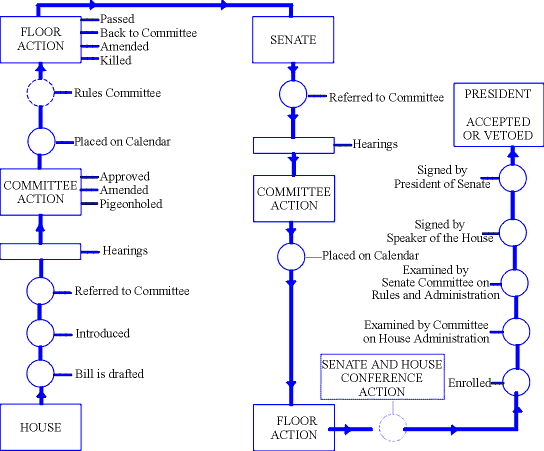3.3 How a Bill Becomes a Law
It is important to know how laws come into existence. Within its term of two years, the Congress holds two annual sessions. During these sessions, a number of bills are proposed. While as many as twenty thousand bills may be introduced however only five to ten percent of them may actually be passed forward as laws. Besides, while some of them may be passed on immediately, others may require more time through deliberation, discussion and even arguments. Moreover, the eventual Act may sound very different from the original bill.

Exhibit 3.3
How a Bill becomes a Law
Click here to
enlarge
A bill is the draft of a proposed law from the time of its introduction in a legislative body, through the various stages required, until its final enactment (as a law). A bill in introduced in the legislature by one of its members. After it is passed, it becomes an Act or a law.
According to rule, a bill has to be submitted in a required form. It has to be typewritten on several copies of a special form. There are three parts to a bill, namely, the title, the enacting clause and the body. The title describes the contents, the enacting clause gives the necessary legal effect, while the body of the bill contains the meat of the proposed law.
[next page]
|
Index
3.0
Introduction
3.1 Powers of Congress
3.2 The Organization of Congress 3.3
How a Bill becomes a Law
Chapter
4
|